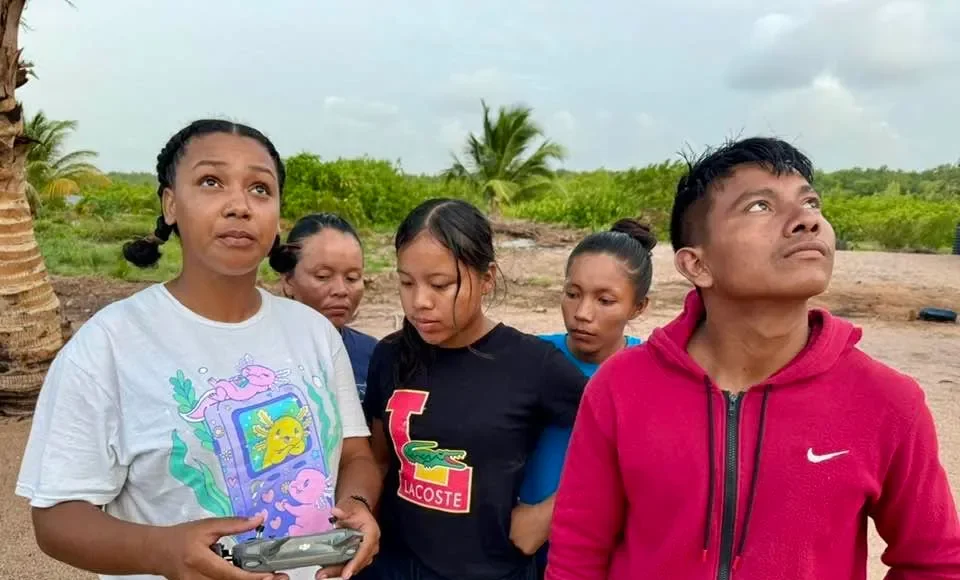In this area, farming and cassava bread production are the backbone of the local economy, and protecting these forests is critical for the planet as well as the people who depend on these ecosystems to survive.
Thanks to the Guyana Marine Conservation Society (GMCS), nearly a dozen young women are being trained to use drones to monitor the mangroves.
Once they complete their training, they will join the Barima Mora Passage Drone Unit, which specialises in both aerial and underwater drone surveillance.

Spearheading this initiative is the Project Director of GMCS, Annette Arjoon-Martins.
In episode two of the United For Biodiversity: The Alliance Podcast, she emphasised the importance of integrating conservation with community development.
“It’s very important we work with people living in these forested landscapes,” she noted. “We looked at alternative livelihoods for the Warrau communities in the Barima Mora Passage…and what we did is find girls who had an interest in technology.”
Most of the girls chosen were information technology (IT) officers in their communities and trained by the government. GMCS was able to build on this foundation. They first learned how to operate unmanned aerial vehicles (UAVs) to acquire basic drone monitoring skills.
Once their training was completed, the girls were then paid to go out every six months to monitor the mangrove. They would collect data and report any infractions or illegal activities.
Later, they learned how to operate remote operating vehicles (ROVs), underwater drones with the Guyana Marine Administration Department (MARAD).
These girls are now part of a team working on a project with the National Agricultural Research and Extension Institute (NAREI) and the Inter-American Development Bank (IDB) Lab to map the blue carbon in mangroves.

The project has also attracted academic interest. To further enhance efficiency, a PhD student from Duke University is working in the area and utilising thermal imagery to track the sea turtles coming to nest on shore. This makes it easier for rangers to tag the turtles, instead of walking the beach and hoping to find one.
The project has created a chain effect, where the skills learned can be easily passed on to other persons in the community, boosting the human resource capacity.
One of the group leaders, Shakira Yipsam, is now passing her knowledge on her knowledge of drone technology to others in her village.
Arjoon-Martins noted that their work could not have been possible without support from the government.
“If the government didn’t have the vision of having the protected areas system set up, we wouldn’t be sitting here talking about this marvellous experience that we had with the Shell Beach protected area.”

A major aspect of GMCS’s work is the development of green enterprises in Region One communities. Currently, they are producing pepper flakes from wiri wiri pepper grown in the region, employing over 30 women in Imbotero.
The green enterprises started honey production from hives in the mangroves and will soon expand into value-added products, such as soaps.
Arjoon-Martins recalled that when she visited President Ali in late 2020 to get his blessing to work in the Barima Mora Passage, she told him what her plans were for the green enterprise development in these communities. “He underwrote the support that allowed us to train 12 beekeepers,” she said.
This initiative is one of many conservation efforts being championed by the government, as the country strengthens its role as a global leader in biodiversity protection.
In keeping with this commitment, Guyana will host the Global Biodiversity Alliance Summit from July 23–25 in Georgetown, a landmark event that will bring together world leaders, scientists, and indigenous voices to accelerate progress toward the 30×30 global biodiversity target. (Department of Public Information)












